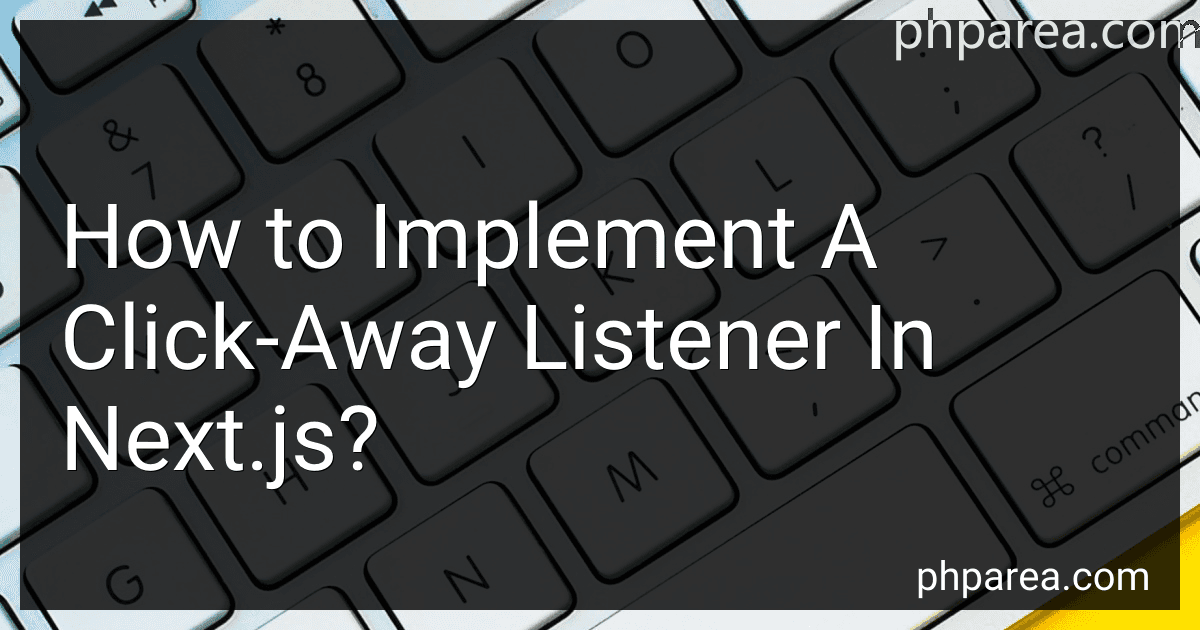Best JavaScript Tools for Next.js Developers to Buy in December 2025
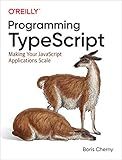
Programming TypeScript: Making Your JavaScript Applications Scale


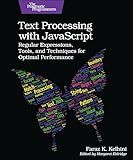
Text Processing with JavaScript: Regular Expressions, Tools, and Techniques for Optimal Performance


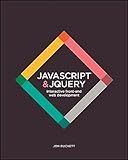
JavaScript and jQuery: Interactive Front-End Web Development
- MASTER CORE JAVASCRIPT AND JQUERY CONCEPTS WITH EASE!
- INSPIRING EXAMPLES MAKE LEARNING ENGAGING AND FUN!
- EASY-TO-FOLLOW DIAGRAMS SIMPLIFY COMPLEX IDEAS FOR ALL!



STREBITO Electronics Precision Screwdriver Sets 142-Piece with 120 Bits Magnetic Repair Tool Kit for iPhone, MacBook, Computer, Laptop, PC, Tablet, PS4, Xbox, Nintendo, Game Console
- COMPLETE TOOLKIT: 120 BITS AND 22 ACCESSORIES FOR ANY REPAIR PROJECT.
- ERGONOMIC DESIGN: COMFORTABLE GRIP AND FLEXIBLE SHAFT FOR EASY USE.
- ORGANIZED & PORTABLE: EASY STORAGE IN A DURABLE, LIGHTWEIGHT BAG.


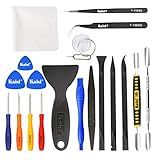
Kaisi Professional Electronics Opening Pry Tool Repair Kit with Metal Spudger Non-Abrasive Nylon Spudgers and Anti-Static Tweezers for Cellphone iPhone Laptops Tablets and More, 20 Piece
- COMPLETE KIT FOR ALL YOUR ELECTRONICS REPAIR NEEDS
- DURABLE STAINLESS STEEL TOOLS FOR LONG-LASTING USE
- INCLUDES CLEANING TOOLS FOR A FLAWLESS FINISH



iFixit Jimmy - Ultimate Electronics Prying & Opening Tool
-
HIGH-QUALITY STEEL BLADE FOR PRECISE ACCESS IN TIGHT SPACES.
-
ERGONOMIC HANDLE ENSURES CONTROL FOR EFFORTLESS REPAIRS.
-
VERSATILE TOOL FOR TECH DISASSEMBLY AND HOME IMPROVEMENT TASKS.



Web Design with HTML, CSS, JavaScript and jQuery Set
- TWO-VOLUME SET BLENDS RELATED TECHNOLOGIES FOR SEAMLESS LEARNING.
- HIGHLY VISUAL FORMAT MAKES COMPLEX TOPICS EASY TO UNDERSTAND.
- IDEAL FOR BEGINNERS IN WEB DESIGN AND FRONT-END DEVELOPMENT.



Software Design by Example


To implement a click-away listener in Next.js, you can follow these steps:
- First, import the necessary modules from Next.js. You will need to use useRef and useEffect hooks from React.
import { useRef, useEffect } from 'react';
- Create a function component and define a ref using the useRef hook. This ref will be used to track the reference to the element you want to click away from.
const Component = () => { const ref = useRef(null);
useEffect(() => { // Click-away logic here }, []);
return ( {/* Component content */} ); };
- Add the click-away logic inside the useEffect function. In this logic, you will add an event listener to the document that captures all click events. Then, you can check if the clicked target is outside the component referenced by ref. If it is outside, you can perform the desired behavior (e.g., close a modal, reset a form, etc.).
useEffect(() => { const handleClickOutside = (event) => { if (ref.current && !ref.current.contains(event.target)) { // Perform click-away action here // For example: close a modal } };
document.addEventListener('click', handleClickOutside);
return () => { document.removeEventListener('click', handleClickOutside); }; }, []);
- Inside the return statement of your component, assign the ref created earlier to the element you want to track clicks away from.
return (
That's it! You have successfully implemented a click-away listener in Next.js. Now, whenever a click occurs outside the component, the specified action will be triggered.
What is the best practice for adding a click-away listener to a Next.js application?
The best practice for adding a click-away listener to a Next.js application is to use the useEffect hook to attach the listener when the component mounts and remove it when the component unmounts. Here's an example:
import { useEffect, useRef } from 'react';
const MyComponent = () => { const ref = useRef(null);
useEffect(() => { // Function to handle the click-away event const handleClickAway = (event) => { if (ref.current && !ref.current.contains(event.target)) { // Perform necessary action when clicked away console.log('Clicked away!'); } };
// Attach the event listener when component mounts
document.addEventListener('click', handleClickAway);
return () => {
// Remove the event listener when component unmounts
document.removeEventListener('click', handleClickAway);
};
}, []);
return My Component; };
export default MyComponent;
In this example, we create a ref using useRef to reference the component's DOM element. Inside the useEffect hook, we define the handleClickAway function to check if the click event target is outside the component (not a descendant of the component). If the condition is met, you can perform the necessary action for a click-away event.
Then, we attach the event listener to the document when the component mounts and remove it when the component unmounts using the cleanup function returned by useEffect. The empty dependency array [] ensures the effect only runs once during component mount and cleanup happens on unmount.
By using this approach, you can easily add a click-away listener to your Next.js application and handle the necessary actions when users click outside a specific component.
What is the syntax for adding event listeners in Next.js?
In Next.js, you can add event listeners using the built-in React event handling syntax. Here's the basic syntax:
- Import the necessary modules and hooks at the top of your component file:
import { useEffect } from 'react';
- In your React component, use the useEffect hook to add event listeners when the component mounts:
useEffect(() => { const handleEvent = (event) => { // event handling logic };
// Add event listeners window.addEventListener('event-type', handleEvent);
// Clean up the event listeners when the component unmounts return () => { window.removeEventListener('event-type', handleEvent); }; }, []);
Note that the [] as the second argument to the useEffect hook makes it run only once, when the component mounts. If you want the event listeners to be re-registered whenever a particular state changes, you can provide that state variable in the array, e.g., [myState].
- Replace 'event-type' with the actual event you want to listen to, such as 'click', 'mousemove', etc.
- Replace // event handling logic with your custom logic to handle the event.
By adding this code to your Next.js component, you can attach event listeners to the specific events you want. Remember to clean up the event listeners when the component unmounts to prevent memory leaks.
What is the role of useRef hook in implementing a click-away listener in Next.js?
The role of the useRef hook in implementing a click-away listener in Next.js is to create a mutable ref object that can be attached to a specific element in the DOM. This ref can then be used to check whether a click event occurred inside or outside of a specific element.
Here is an example of how to use the useRef hook to implement a click-away listener in Next.js:
- Import the necessary React hooks:
import React, { useRef, useEffect } from 'react';
- Create a functional component that uses the useRef hook:
const ClickAwayListener = () => { const wrapperRef = useRef(null);
useEffect(() => { // Function to handle click event const handleClickOutside = (event) => { if (wrapperRef.current && !wrapperRef.current.contains(event.target)) { console.log('Clicked away!'); // Your logic for when a click occurs outside the element } }
// Attach the click event listener
document.addEventListener('mousedown', handleClickOutside);
// Cleanup the click event listener
return () => {
document.removeEventListener('mousedown', handleClickOutside);
};
}, []); // Empty dependency array to ensure the effect only runs once
return ( {/* Your component's content */} ); }
export default ClickAwayListener;
- In your Next.js page, import and use the ClickAwayListener component:
import ClickAwayListener from '../path-to-ClickAwayListener';
const MyPage = () => { return ( {/* Your page's content */} ); }
export default MyPage;
In this example, the wrapperRef ref is attached to the div element returned by the ClickAwayListener component. This ref is then used in the handleClickOutside function, which checks if a click event occurred outside of the div. If so, the logic for when a click occurs outside the element will be executed.
Remember to import the necessary React hooks (useRef and useEffect) and handle any required cleanup within the useEffect dependency array.
What is the difference between a click listener and a click-away listener in web development?
In web development, a click listener and a click-away listener are both event listeners that are used to handle click events on different elements on a web page. However, they serve different purposes:
- Click Listener: A click listener is used to detect and handle click events on a specific element or set of elements. When a user clicks on the element(s) with a click listener attached, the associated event handler is triggered, and some action or functionality is executed. It is generally used when you want to listen for clicks on a specific element or set of elements, such as buttons, links, or images.
- Click-Away Listener: A click-away listener, also referred to as a outside click listener or document click listener, is used to detect and handle click events outside of a specific element or set of elements. It is often used when you want to perform a certain action or hide/show an element when the user clicks outside of a specific region, like a dropdown menu, modal, or pop-up. The click-away listener is attached to the whole document or a container element, allowing it to listen for click events on any part of the page except for the specified element(s).
In summary, while a click listener listens for click events on a specific element, a click-away listener listens for click events on any other element except for a specific element or set of elements.
How to prevent a modal from closing on outside click in Next.js?
To prevent a modal from closing on outside click in Next.js, you can add an event listener to the modal container or overlay element and stop the propagation of the click event, so that it does not reach the modal's close handler.
Here's an example of how you can achieve this:
- Create a modal component:
import { useEffect, useRef } from 'react';
const Modal = ({ isOpen, onClose, children }) => { const modalRef = useRef(null);
useEffect(() => { const handleOutsideClick = (event) => { if (!modalRef.current.contains(event.target)) { event.stopPropagation(); } };
document.addEventListener('click', handleOutsideClick);
return () => {
document.removeEventListener('click', handleOutsideClick);
};
}, []);
if (!isOpen) { return null; }
return ( {children} Close ); };
export default Modal;
- Use the modal component in your Next.js page or component:
import { useState } from 'react'; import Modal from './Modal';
const MyPage = () => { const [isOpen, setIsOpen] = useState(false);
const openModal = () => { setIsOpen(true); };
const closeModal = () => { setIsOpen(false); };
return ( Open Modal This is the modal content. ); };
export default MyPage;
In the above example, the useEffect hook is used to add an event listener to the document on component mount. The event listener checks if the clicked element is within the modal container using the contains method. If the click event is outside the modal container, the stopPropagation method is called to prevent the event from reaching the modal's close button. Finally, the event listener is removed on component unmount.
